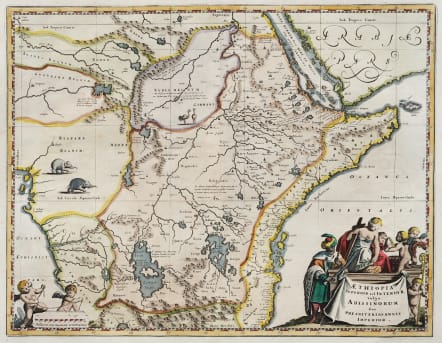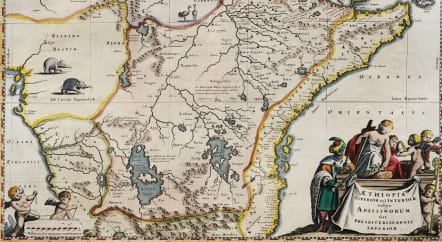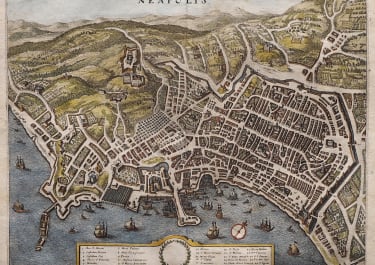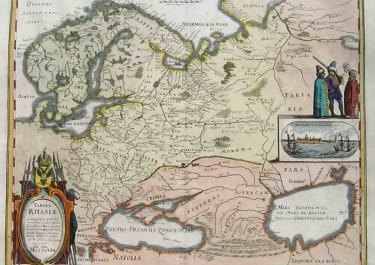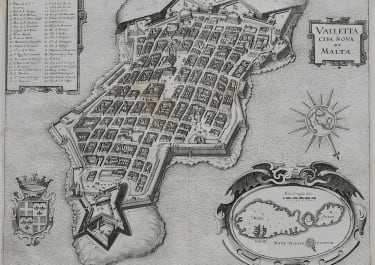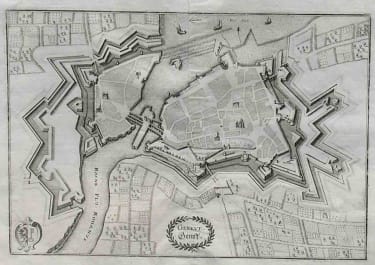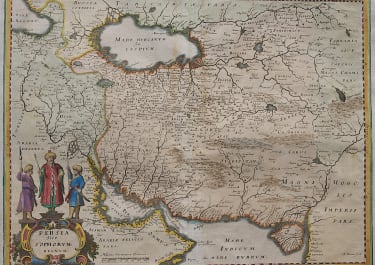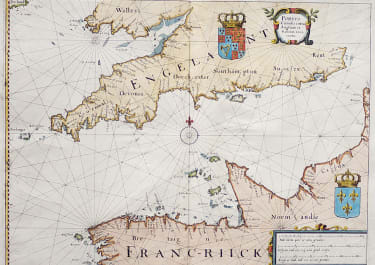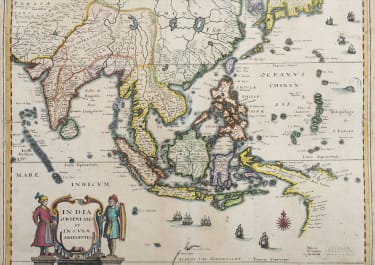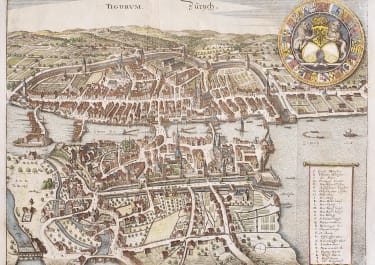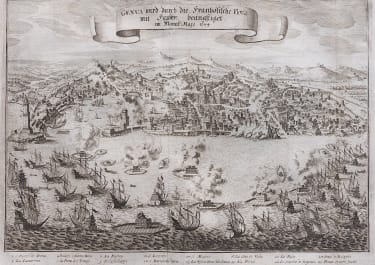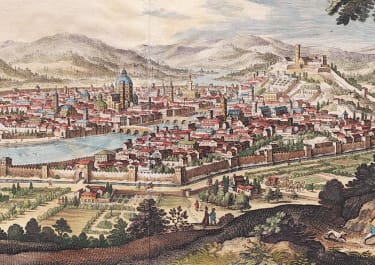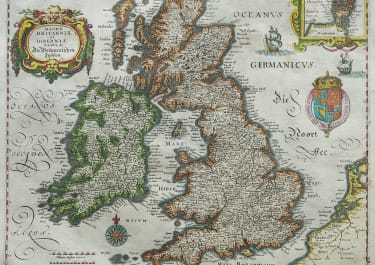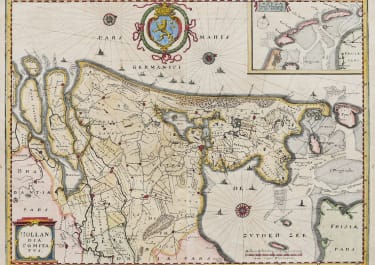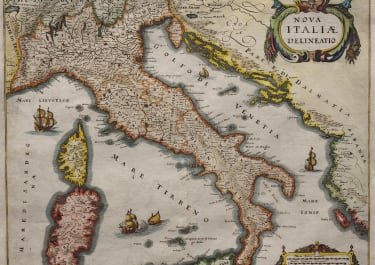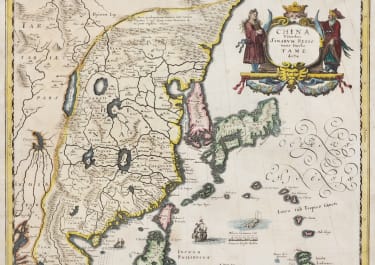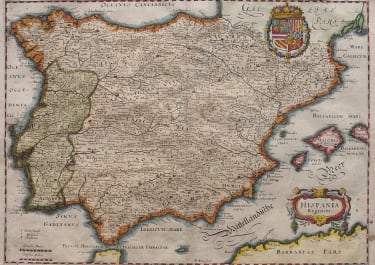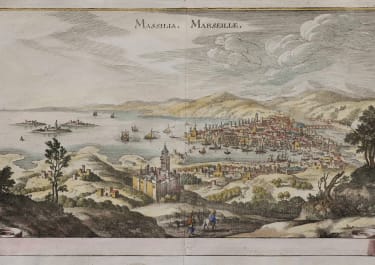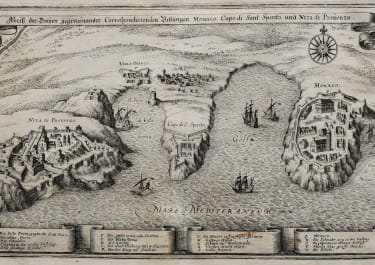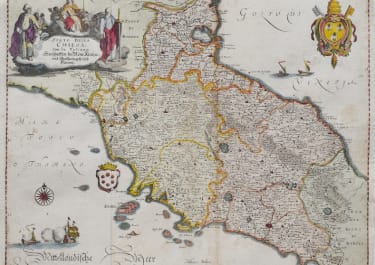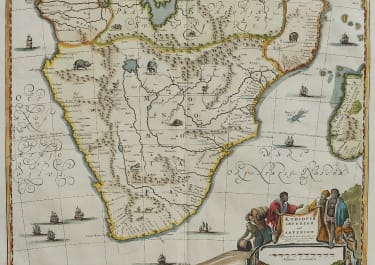AETHIOPIA SUPERIOR VEL INTERIOR VULGO ABISSINORUM
£345
Attractive map of eastern and central Africa depicting the legendary Christian kingdom of Prester John.
It is based on an earlier map by Blaeu with a fair amount of detail on the eastern coast, reflecting colonial trading interests. The Nile is shown originating in the twin Ptolemaic lakes of Zaire and Zaflan. Mountains of the moon Lunes Montes marked.
Zanzibar;
The map is decorated with a title cartouche surrounded by native figures and a decorative scale of miles, while in the interior elephants, ostriches and a monkey roam.
Excellent hand colour
Very good condition
code : M5381
Cartographer : MERIAN Matthaus MERIAN
Date : 1640c Frankfurt
Size : 29.5*37.5 cms
availability : Available
Price : £345
Matthäus Merian der Ältere (or "Matthew", "the Elder", or "Sr."; 22 September 1593 - 19 June 1650) was a Swiss-born engraver who worked in Frankfurt for most of his career, where he also ran a publishing house.
Born in Basel, Merian learned the art of copperplate engraving in Zürich. He next worked and studied in Strasbourg, Nancy, and Paris, before returning to Basel in 1615. The following year he moved to Frankfurt, Germany where he worked for the publisher Johann Theodor de Bry, who was the son of renowned engraver and traveler Theodor de Bry.
In 1623 Merian took over the publishing house of his father-in-law after de Bry's death. In 1626 he became a citizen of Frankfurt and could henceforth work as an independent publisher. He spent most of his working life in Frankfurt.
He produced the 21-volume set was collectively known as the Topographia Germaniae. It includes numerous town plans and views, as well as maps of most countries and a World Map-it was such a popular work that it was re-issued in many editions. He also took over and completed the later parts and editions of the Grand Voyages and Petits Voyages, originally started by de Bry in 1590.
After his death, his sons Matthäus Jr. and Caspar took over the publishing house. They continued publishing the Topographia Germaniae and the Theatrum Europaeum under the name Merian Erben (i.e. Merian Heirs).

